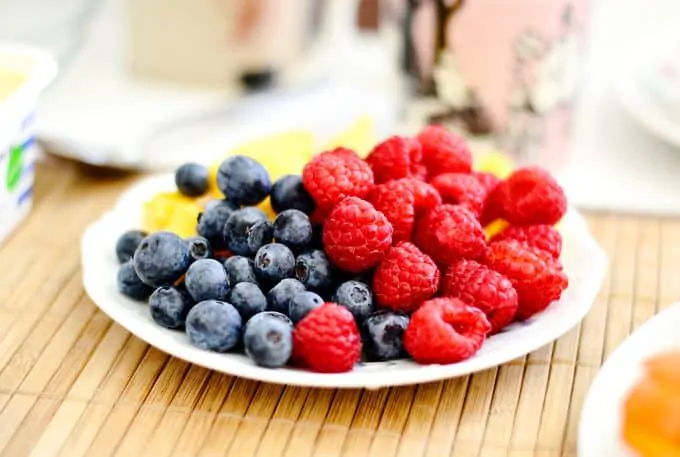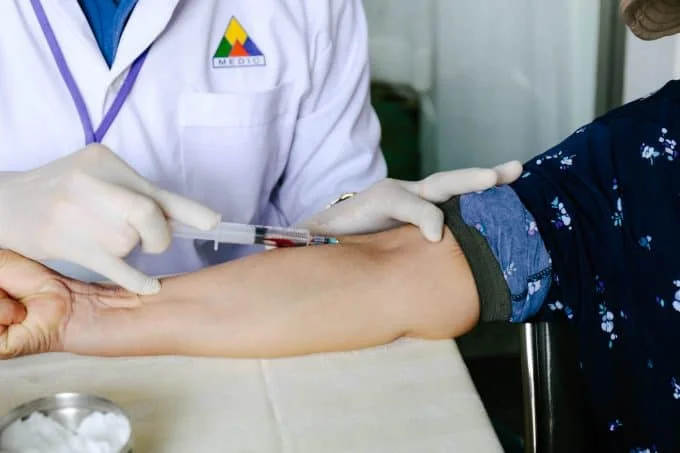Last Updated on January 31, 2021 by Dr Sharon Baisil MD
Diabetes is nowadays a common and chronic health condition in today’s world. It is marked by unusual fluctuations in the body’s blood sugar levels. This is also worsened by insufficient production, release, and insulin functioning that assists the metabolism.
Hence, an ideal way to deal with this metabolic ailment is to keep a check on your diet. There are various restrictions on food for diabetics.
Are you questioning your daily and other common food choices? Did the thought of ‘Rava’ cross your mind? Well, you might be wondering …
- Is Rava good for diabetics?
- What are its nutrients?
- What are the daily limits?
- Are there any benefits of eating Rava?
And so on.
We will clear these questions and doubts for you. So let us get started!
What is Rava?

Call it Rava, Sooji, or Semolina; they are all the same. Rava is small granulated wheat. It is in a powder but is coarser in touch than flour.
This is commonly called ‘Rava’ in the southern parts of India. South Indian cuisines have a lot of dishes in which Rava is the prime grain used. It is known commonly as Sooji in North India.
The making of Rava starts with durum wheat. The husked wheat is granulated to obtain an almost powdery texture. This is the basic procedure behind the making of Rava.
__________________________________
⭐ Check out this Flipbook with 30-Day Diabetic Meal Plan based on Foods from Each Indian State ⭐
(click on the ▶ arrow below to scroll the pages and 🔍 button to enlarge)
_____________________________
The Rava is darker and slightly golden in appearance when compared to regular wheat flours. It also has a mild and natural aroma to it.
Rava is a common grain item in kitchens, generally in Indian kitchens. It is used in various dishes, as substitutes to regular wheat flour varieties, and as any meal of the day.
Rava is famous for its versatility when it comes to both – nutrition and cooking. It is an item that can be fitted to almost all snack recipes to turn them healthy.
Rava is often the best and praised for its rich nutritional profile. It is a safe item for all age groups and can be enjoyed as different dishes.
Healthy snacks and breakfast meal ideas have seen increased usage of Rava to add instant energy and other beneficial nutrients to one’s health.
Some common dishes that include Rava are – Rava Dosa, Rava Idli, Khichdi, porridge, Upma, Rava vegetable Cheela, etc.
Alongside the goodness of nutrients, Rava is also liked because of its ready to use and simple cooking methods. It is never a hectic recipe with Rava. It can be added to everything, and it will complement the taste and overall health benefits.
But let us answer some more serious health-related questions about Rava.
Is Rava Good for Diabetics?

Like all other things, a balance is required between items to have a good effect on health. The same applies to Rava as well. It is important to include Rava in moderate quantities only to avail its goodness on diabetic health.
That means that Rava is safe for blood sugar when taken in regulated amounts. This will assure an advantage for diabetic health without any harm or compromises in the long run.
Over-doing Rava can prove to be dangerous for your blood sugars. This is because Rava is made from wheat, which is a ready source of carbohydrates.
But on the other side of it, there are several major nutritional benefits that the body can gain from it.
Being made out of coarse durum wheat, Rava contains fiber. This is one of the most important nutrients needed by a diabetic patient.
The fiber in the body helps to keep the digestive system properly functioning. It slows down the absorption and release of sugar, which keeps the blood sugar levels from suddenly rising.
The presence of fiber in Rava is the main reason recommended by some experts for diabetes patients. It is also filled with magnesium, which is another essential element, which is important in improving the body’s blood sugar conditions.
A moderate amount of Rava can also enrich you with many healthy minerals required by the body. When included in diabetic diets, little amounts of Rava can supply the body with necessary minerals and fiber.
This can assist in keeping away certain health complications and other diabetic symptoms too.
NOTE: There are enriched varieties of Rava found in markets that are re-filled with some nutrients that have been lost due to granulating the durum wheat. It is best to opt for those re-nourished types of Rava to make sure that you add in extra minerals and vitamins to your diet.
What is the Glycemic Index of Rava?

The Glycemic Index is a simple way to suggest and find out safe foods for diabetics. It is useful as it indicates the effects of food on the blood sugar levels of the body.
The following table shows the Glycemic categories as measured on a scale of 0 to 100:
| Sl. No. | Glycemic Index categories | Glycemic Index ranges |
| 1. | Low Glycemic Index (safe for diabetics) | 0 to 55 |
| 2. | Medium Glycemic Index (safe if taken in controlled quantities) | 55 to 69 |
| 3. | High Glycemic Index (unsafe for diabetics) | From 70 and above |
The Glycemic Index of Rava is 66. According to the above table, we can determine that Rava is moderately safe for diabetic’s health.
Therefore, always remember to include Rava in only limited amounts to attain the health benefits of it.
But are you curious about what this safe amount of Rava is? Don’t know what would be a correct measurement? Well, we will tell us further.
What are the daily limits of Rava for diabetics?
How much Rava can a diabetic eat in a day? Well, the best answer to this would depend on your health and diabetic specifications. Nonetheless, we have some general rules that you can follow.
The stress on the importance of portion control is very necessary for the management of diabetes. Rava is one of the items that need to be watched.
Here are some tips and daily limits to keep in mind:
- A safe and recommended amount of Rava for anyone with diabetics is between 1/3rd cups to ½ cup. This is a correct measurement that won’t harm the blood sugars.
It is best to shift from regular quantities of one cup Rava to diabetes-specific portions. Make sure to choose the lesser amounts of high-carb and high-calorie foods.
- Make sure to use oil-free and other safer cooking methods. It is advisable to stick to less fat and fewer carb methods of cooking.
- Moreover, you can add in a lot of vegetables or fruits, depending on your recipes. It can help to make the dish higher in fiber and micro-nutrients. This will also help increase the nutritional value of the overall meal and nullify the effect of carbs.
- It is best not to include Rava in your diet daily. You can stick to a twice or thrice a week This will help you to keep the blood sugar levels safe.
Always keep these norms and restrictions in mind. Following such rules can benefit and manage health.
Nutritional Composition of Rava
Wondering where the goodness gained from Rava comes from? Well, the answer lies in the nutritional composition of this grain.
Let us have a look at the nutrients and their quantities available in 100 grams of Rava.
| Sl. No. | Nutrients Available | Amount available |
| 1. | Calories | 374 |
| 2. | Carbohydrates – Dietary fiber – Sugar | 81g – 2g – 0 g |
| 3. | Fats | 1.03 g |
| 4. | Protein | 7.51 g |
| 5. | Water | 9.86 g |
| 6. | Copper | 0.284 mg |
| 7. | Calcium | 71 mg |
| 8. | Manganese | 1.035 mg |
| 9. | Magnesium | 27 mg |
| 10. | Selenium | 19.9 mg |
| 11. | Phosphorus | 153 mg |
| 12. | Zinc | 1.02 mg |
| 13. | Potassium | 174 mg |
| 14. | Iron | 0.74 mg |
| 15. | Sodium | 2 mg |
| 16. | Vitamin B6 | 0.452 µg |
| 17. | Vitamin B3 | 5.048 µg |
| 18. | Vitamin B1 | 0.224 µg |
| 19. | Vitamin B5 | 0.672 µg |
| 20. | Folate | Eight µg |
| 21. | Vitamin B2 | 0.05 µg |
| 22. | Vitamin K | 0.1 µg |
| 23. | Vitamin E | 0.03 µg |
Now, let us see what the benefits of these nutrients are.
What are the benefits of eating Rava?
The following are some common benefits of eating Rava:
- Eating Rava is safe for the heart. The fiber presence in Rava helps in protecting the heart. Moreover, it reduces the bad cholesterol in the body and prevents the risks of heart problems.
- It may also be good for managing body weight. Alternating Rava with other unhealthy food choices can help in weight loss. It satisfies the body and keeps away unhealthy cravings.
- It is a good source of iron. Iron aids in better oxygen supply in the body, better blood health, immune support, etc.
- The presence of fiber in Rava makes it good for the digestive system. It helps to keep constipation, indigestion, and gut issues away.
- The presence of numerous vitamins and minerals assists in protecting the body from many other harms and diseases.
What are the Side effects of Rava?
When including this in your meals, also keep in mind the following side effects:
- If you are allergic to wheat, Rava can infuriate this issue. Rava is made from grinding durum wheat.
- As a wheat grain, Rava also has gluten. If you have celiac disease, then Rava’s consumption can worsen this allergy as it is rich in gluten.
Always take the necessary precautions to help serve yourself better when it comes to health.
References
- https://pubmed.ncbi.nlm.nih.gov/21917537/
- https://pubmed.ncbi.nlm.nih.gov/21284328/
- https://pubmed.ncbi.nlm.nih.gov/23008050/
- https://pubmed.ncbi.nlm.nih.gov/21982726/
- https://pubmed.ncbi.nlm.nih.gov/30586587/
- https://pubmed.ncbi.nlm.nih.gov/24490949/
- https://pubmed.ncbi.nlm.nih.gov/30799815/
- https://pubmed.ncbi.nlm.nih.gov/32550156/
- https://pubmed.ncbi.nlm.nih.gov/32702056/
- https://pubmed.ncbi.nlm.nih.gov/31951932/








